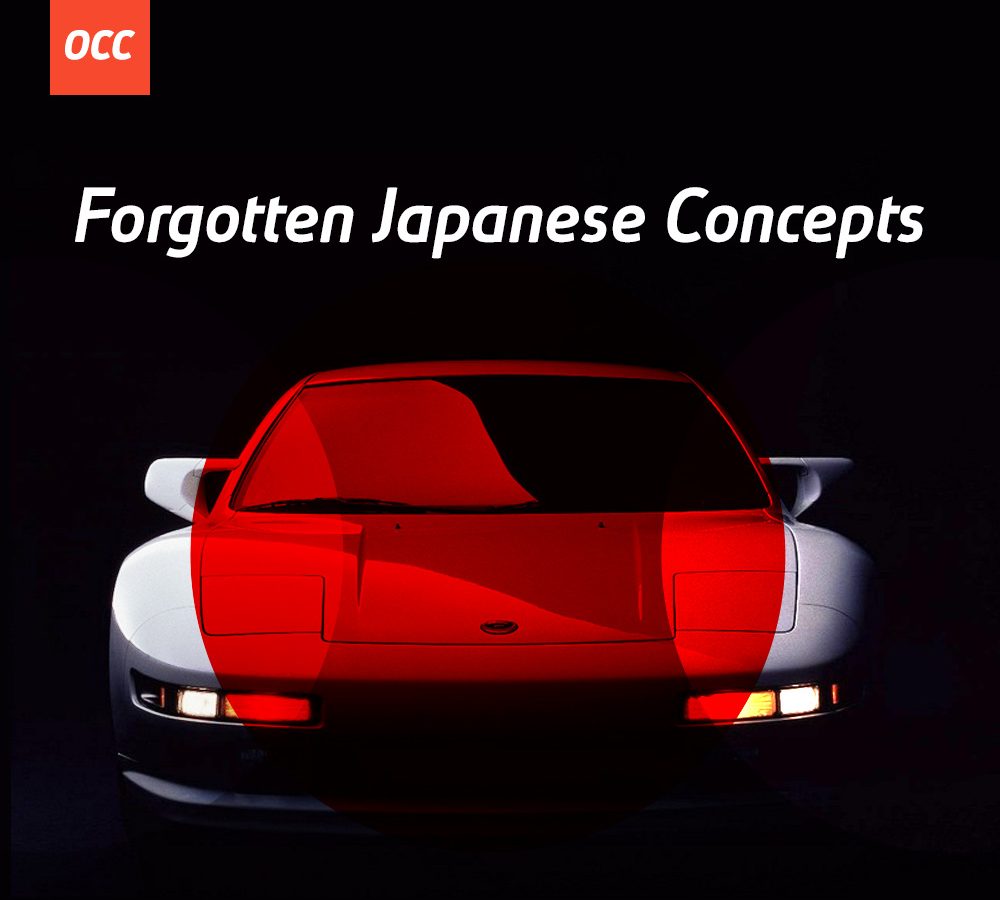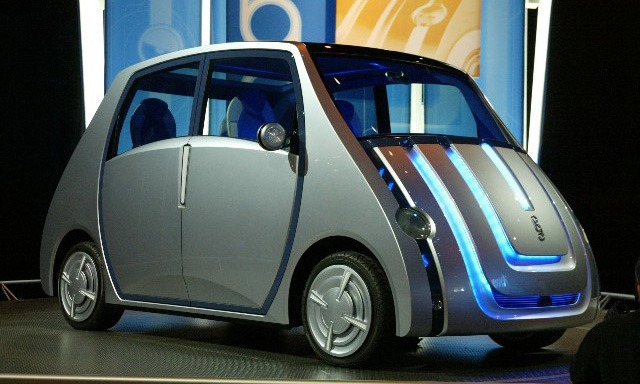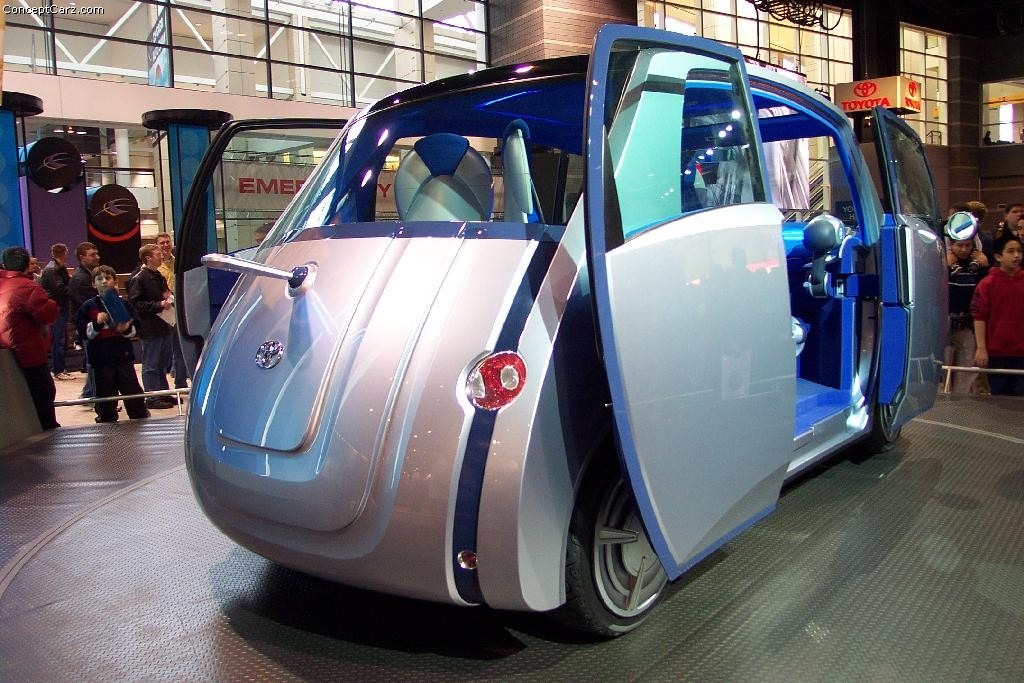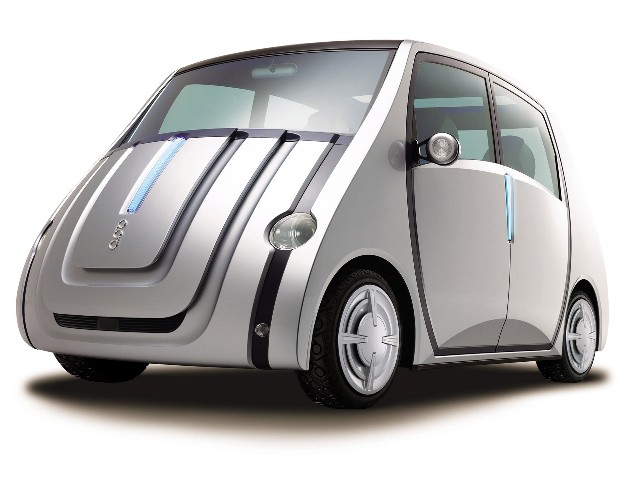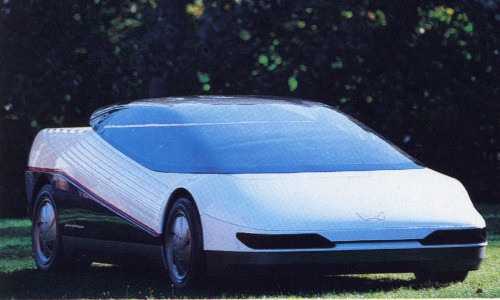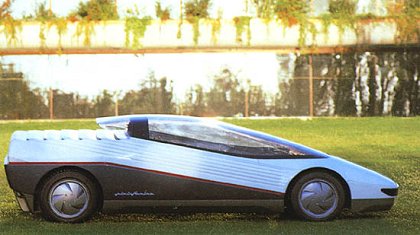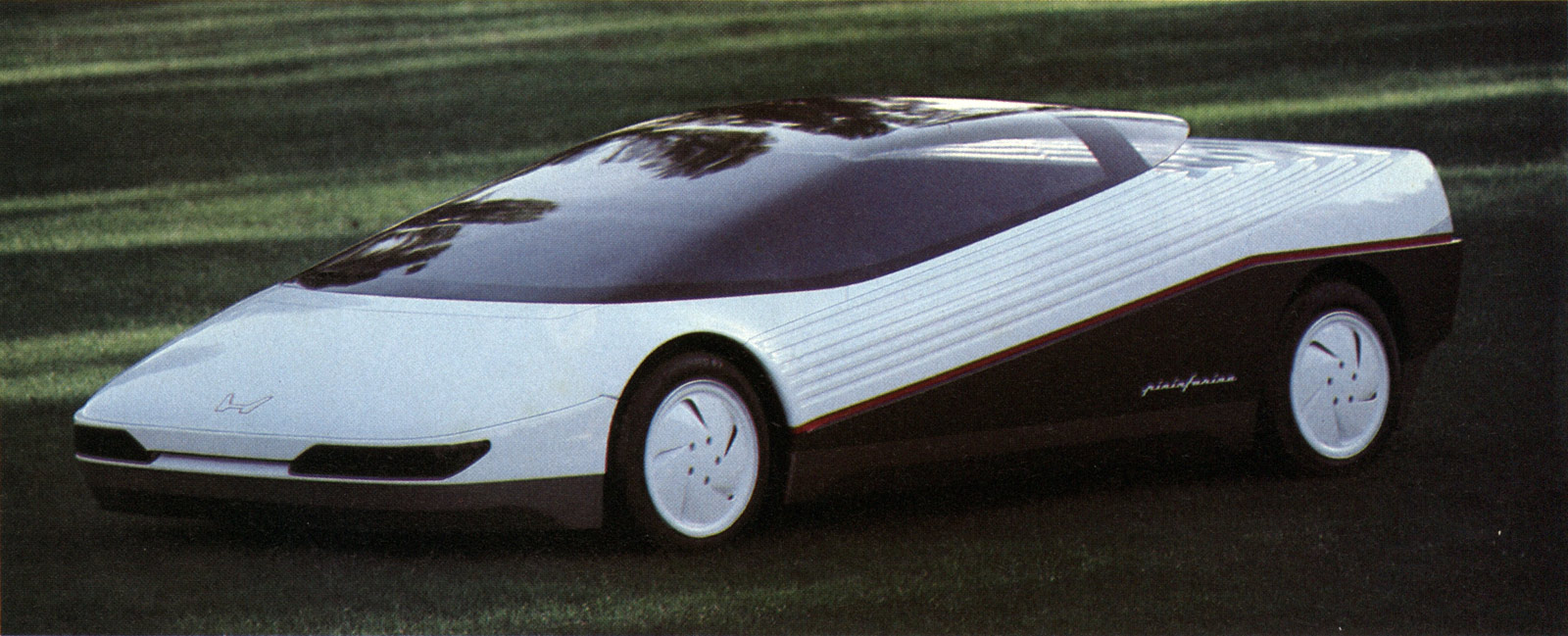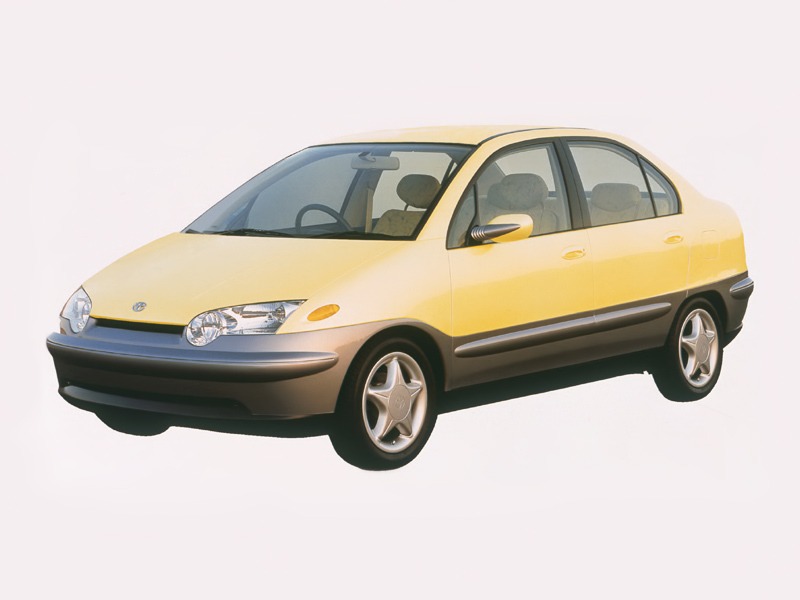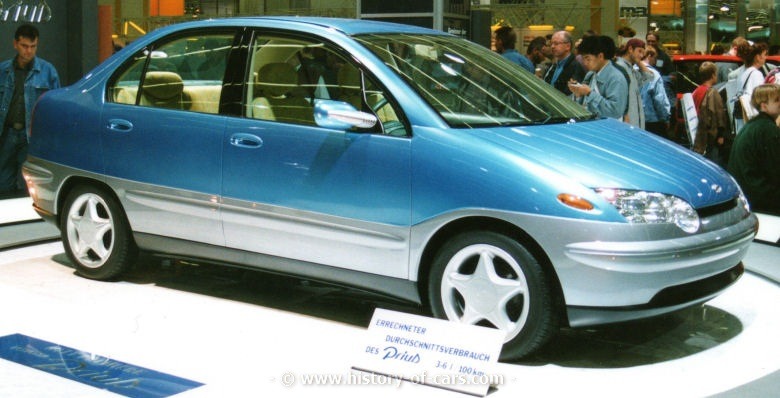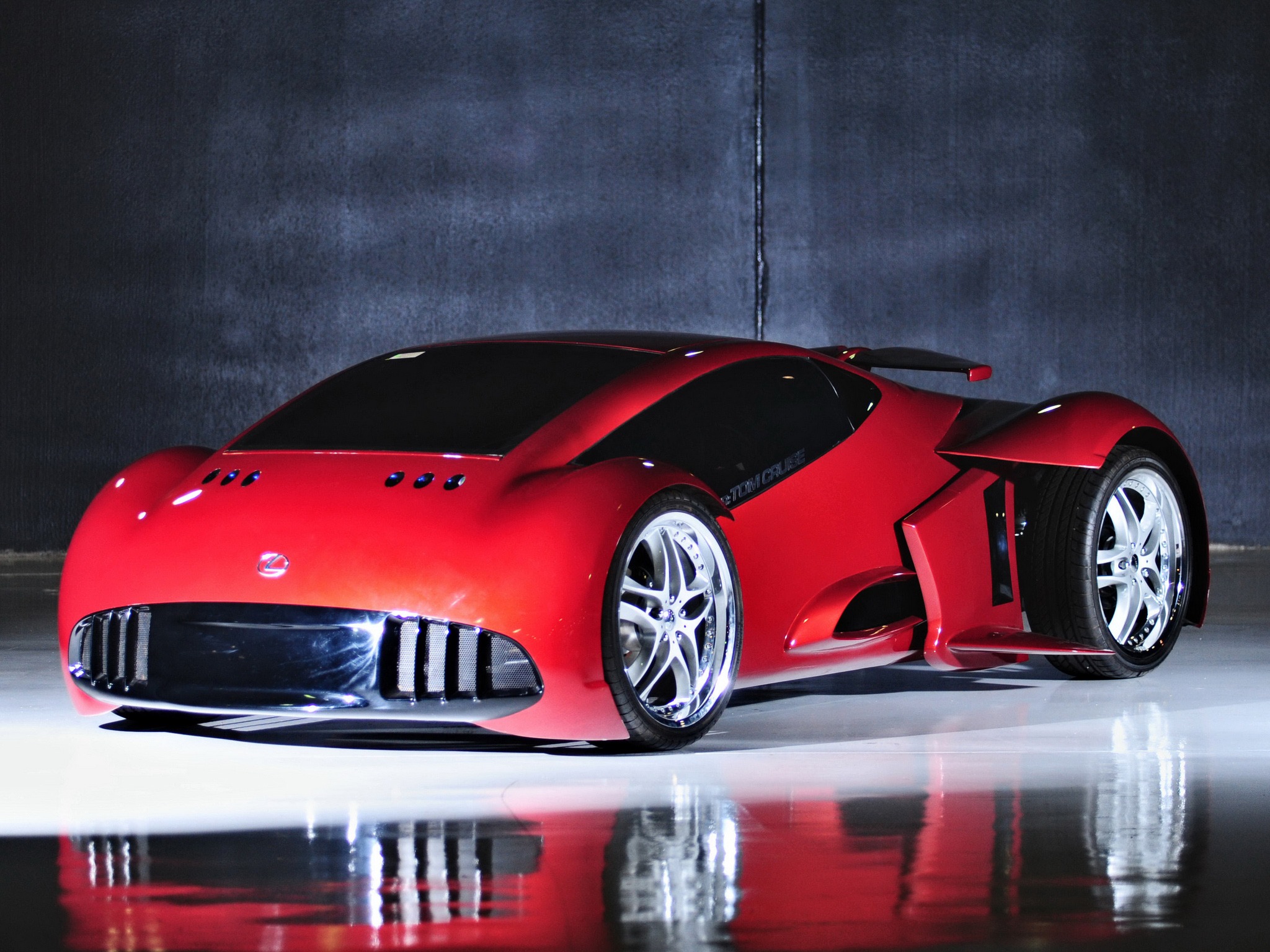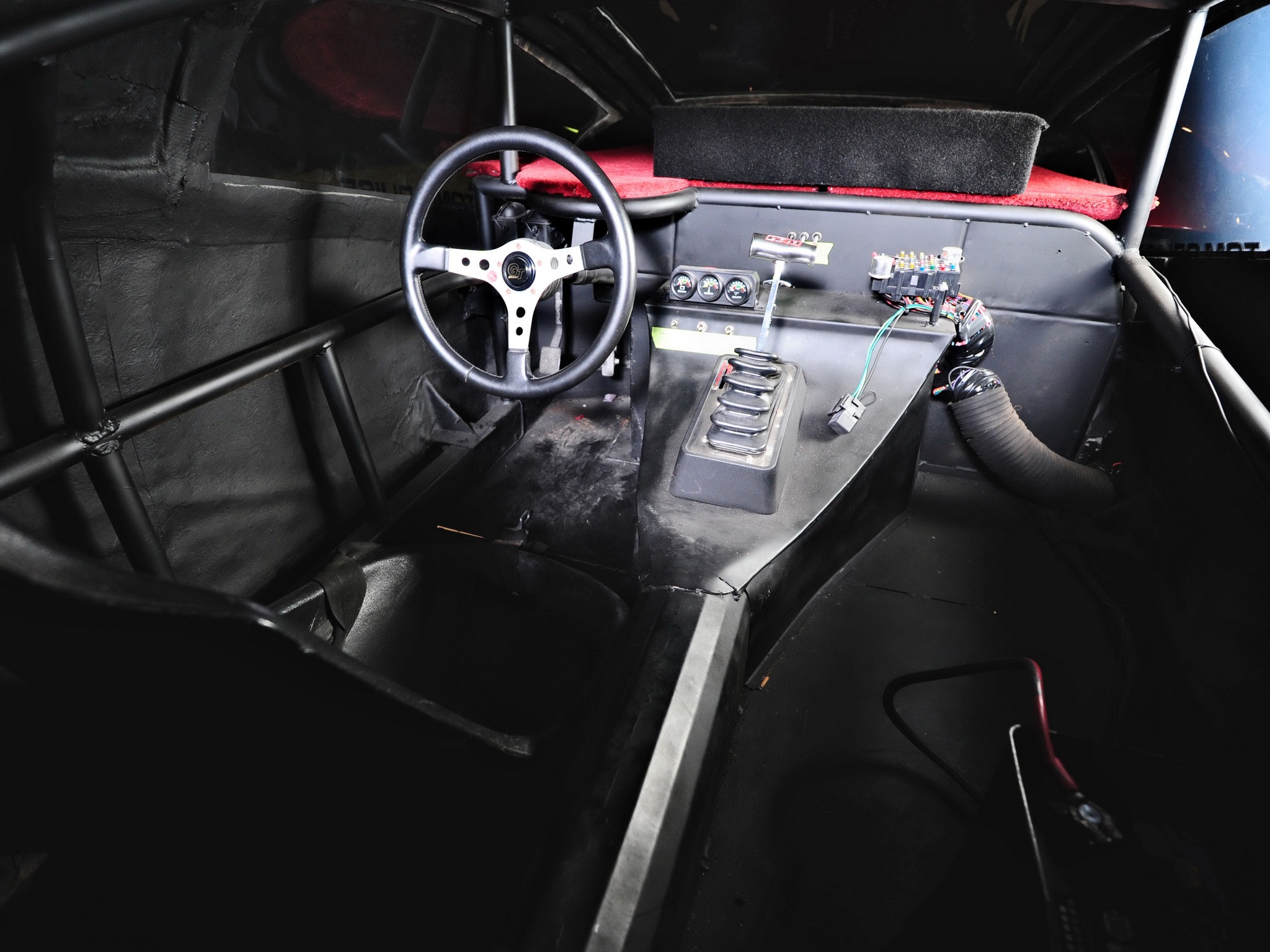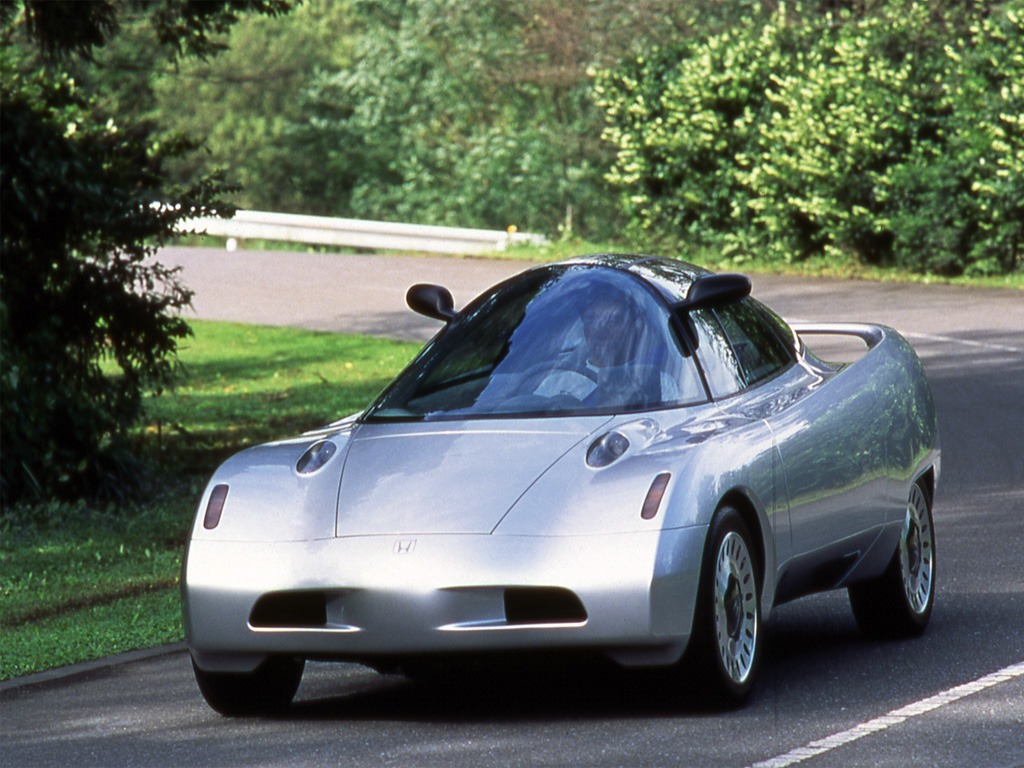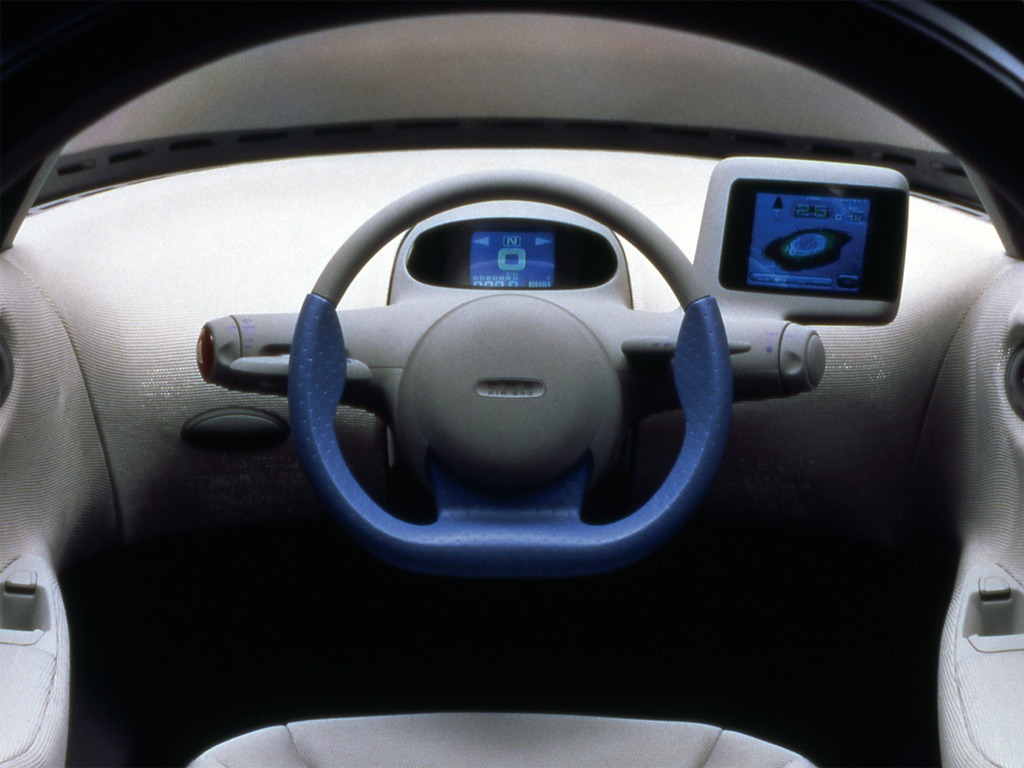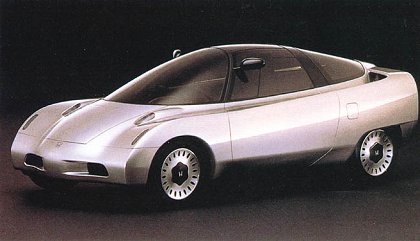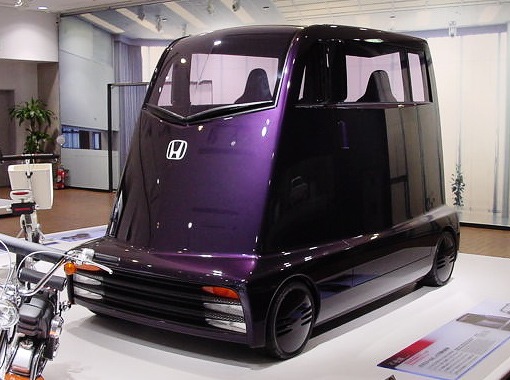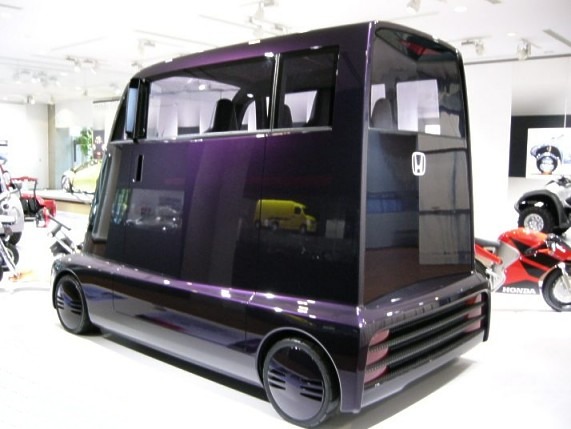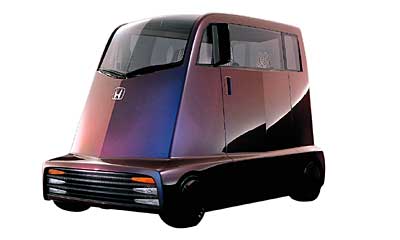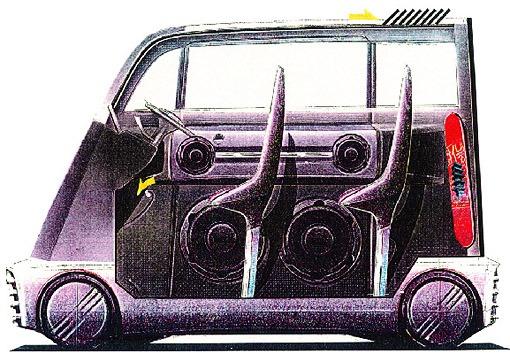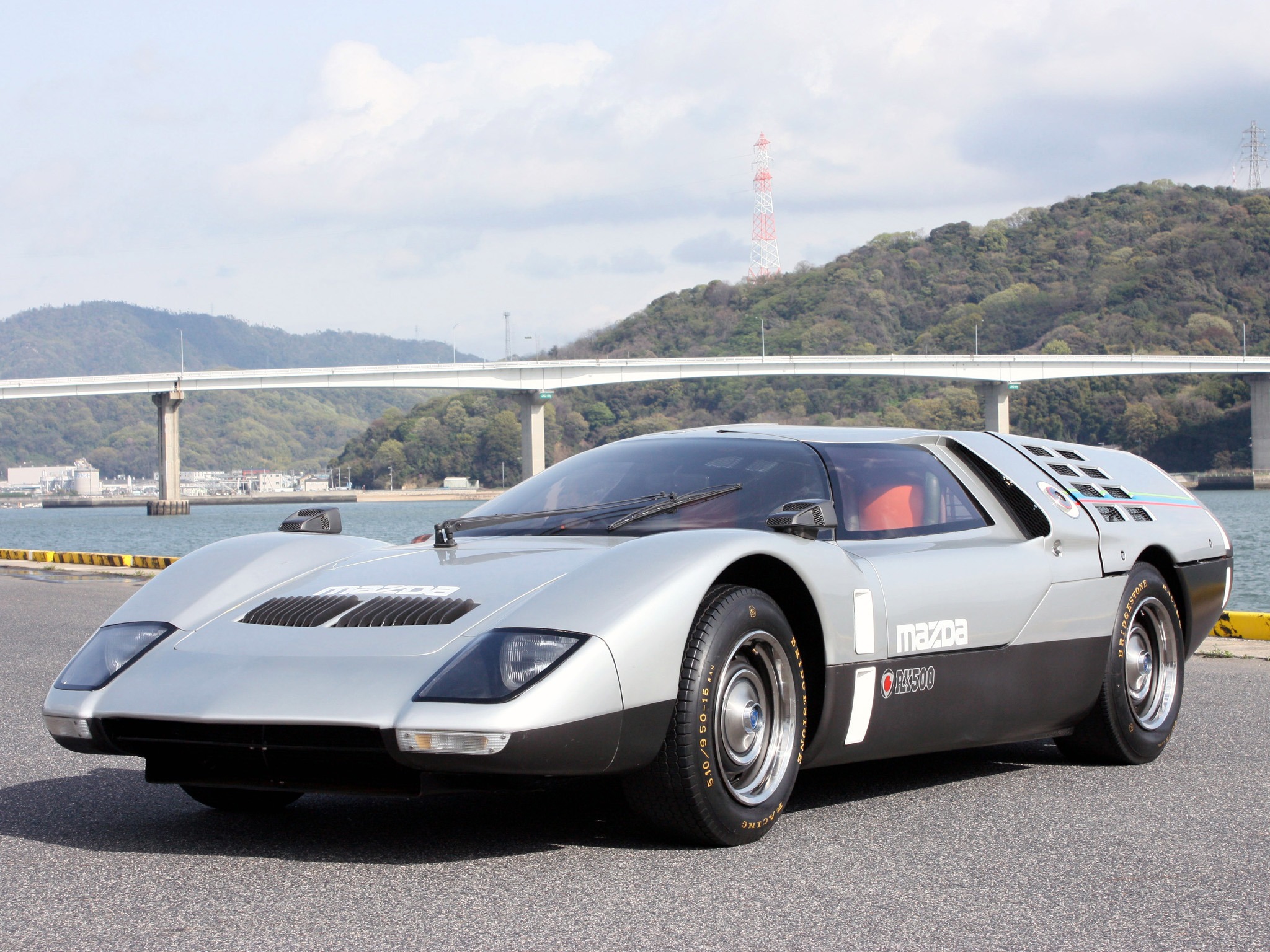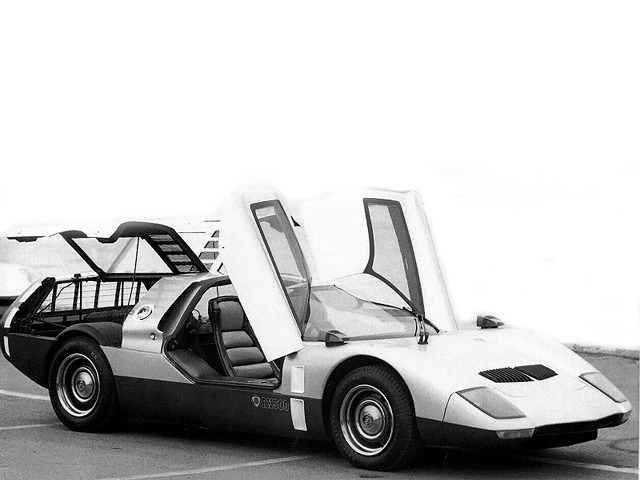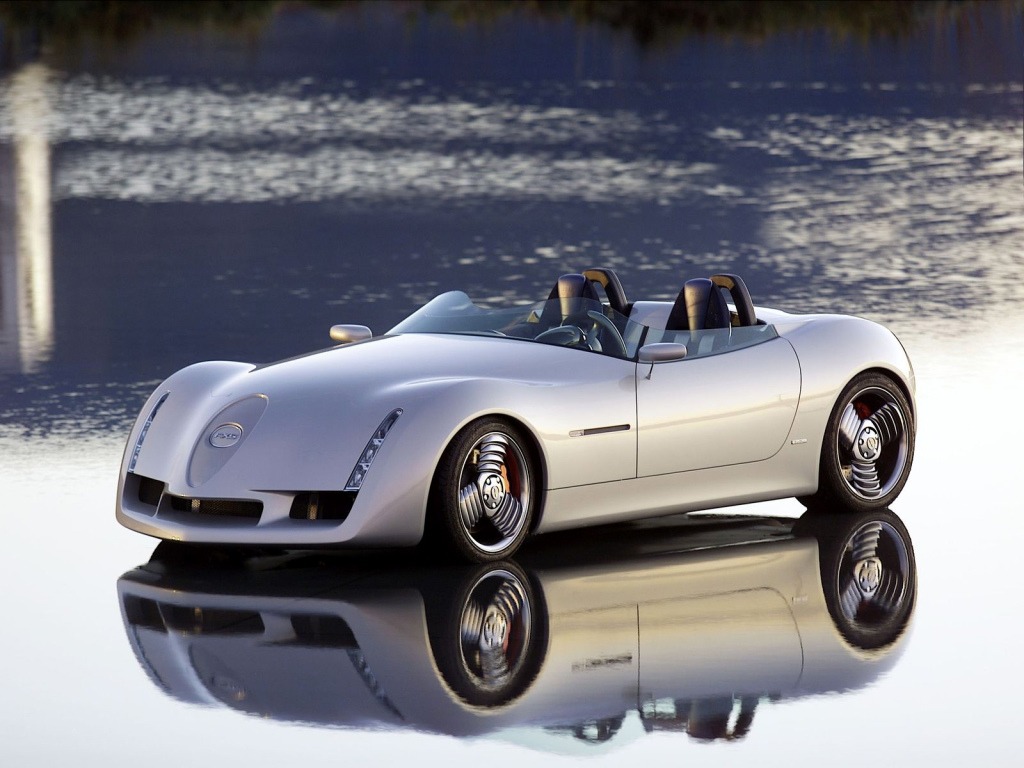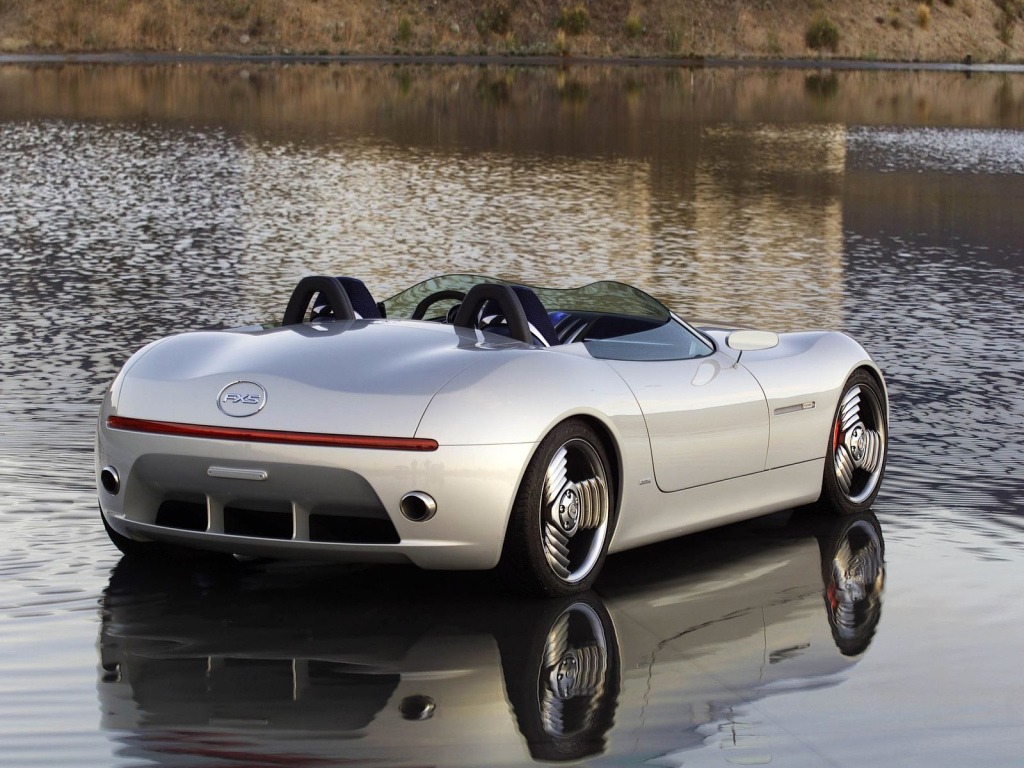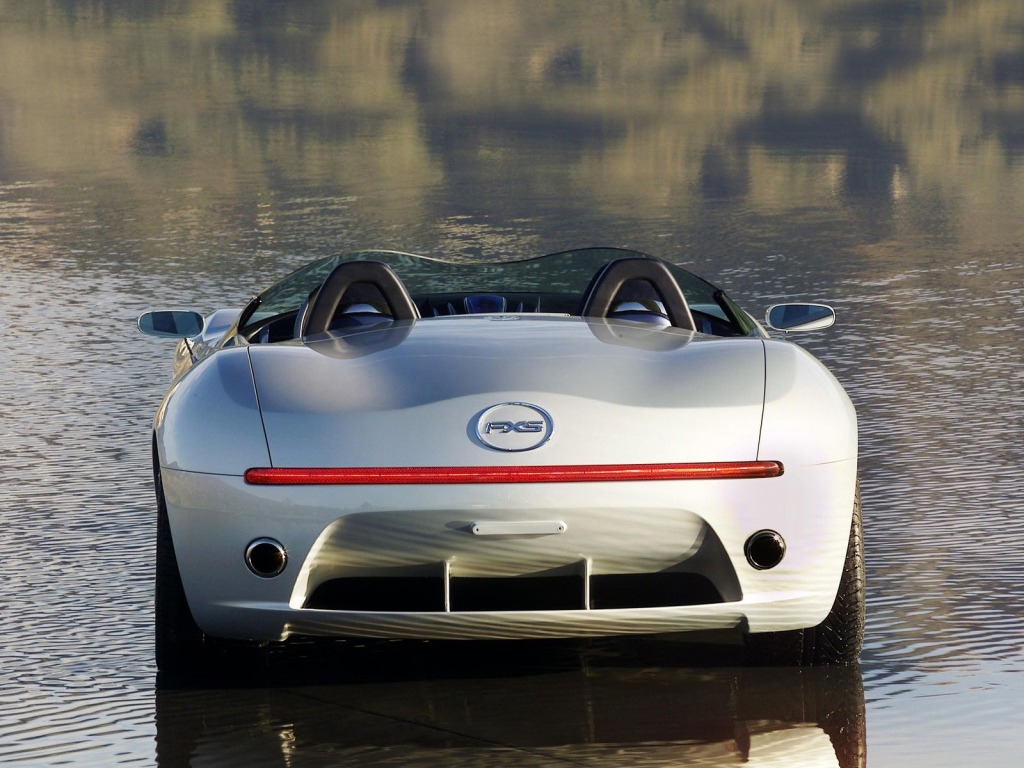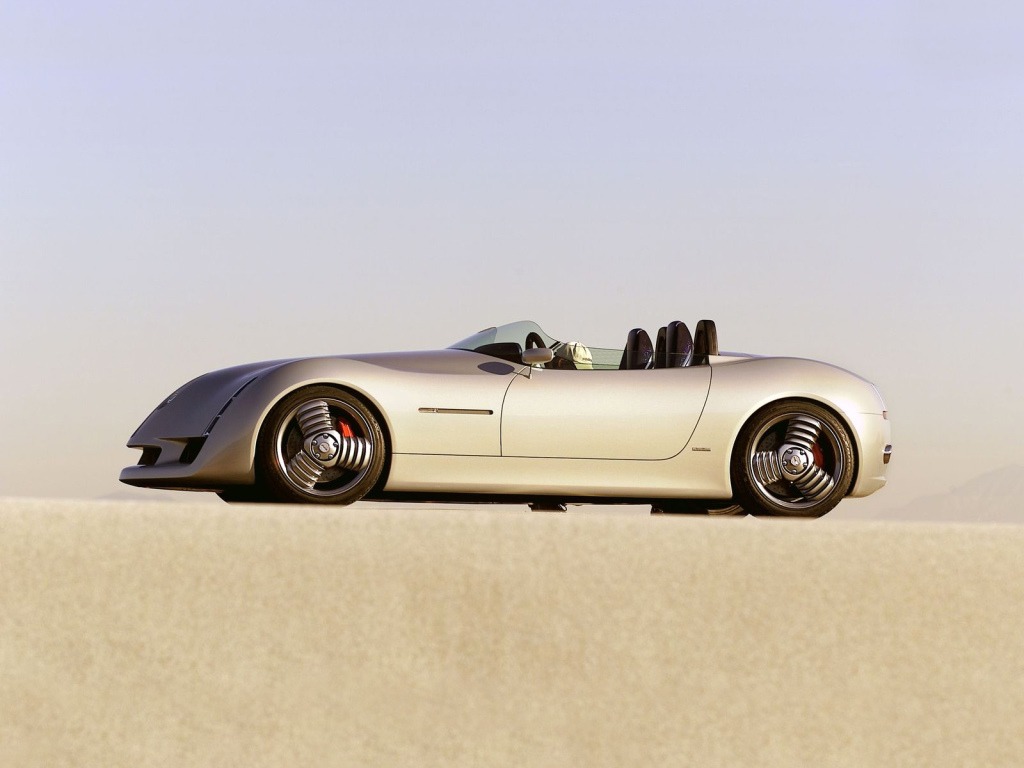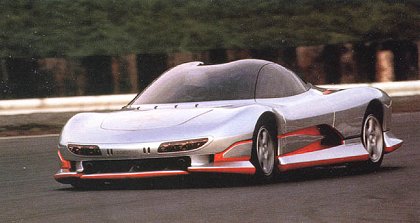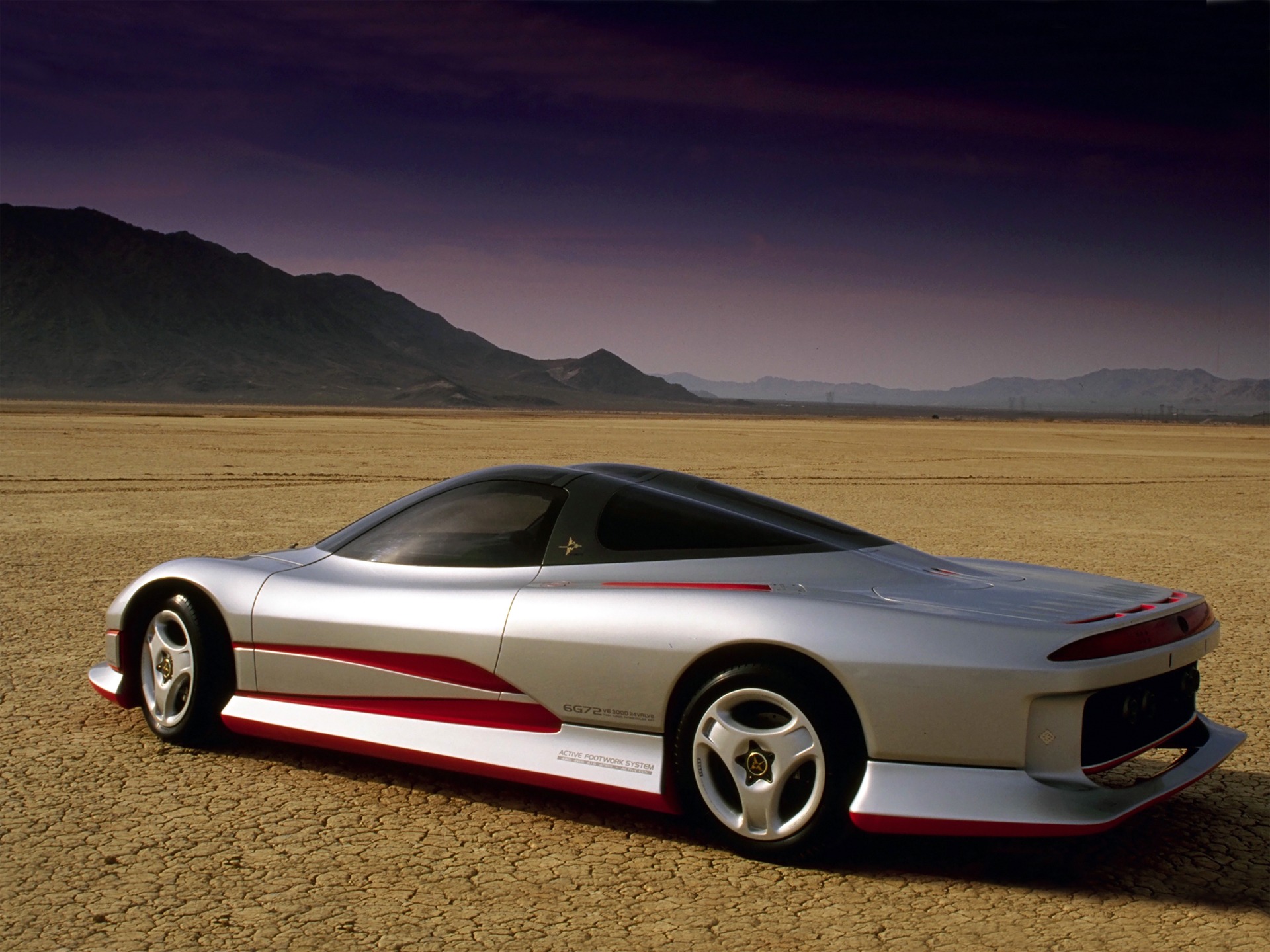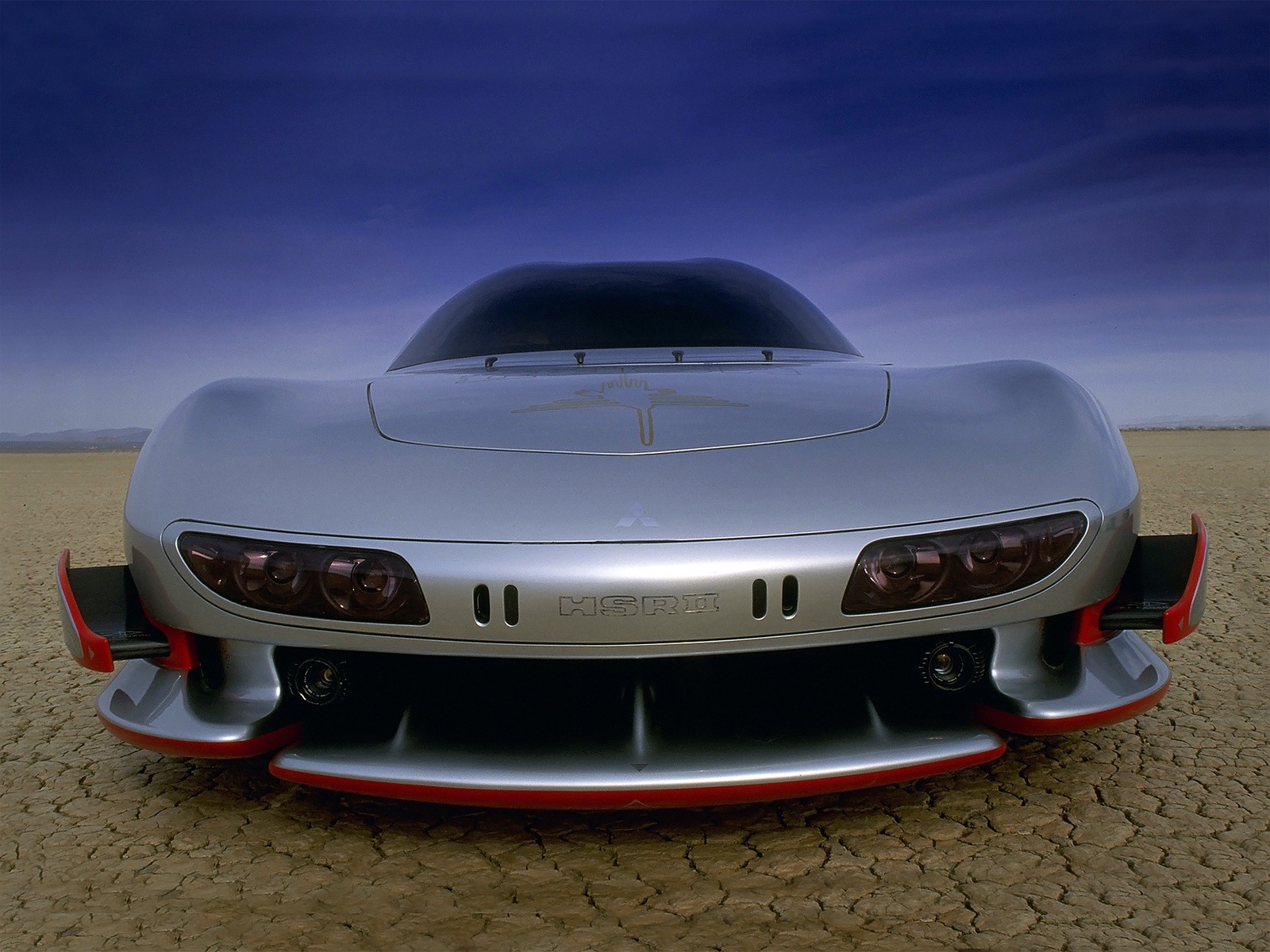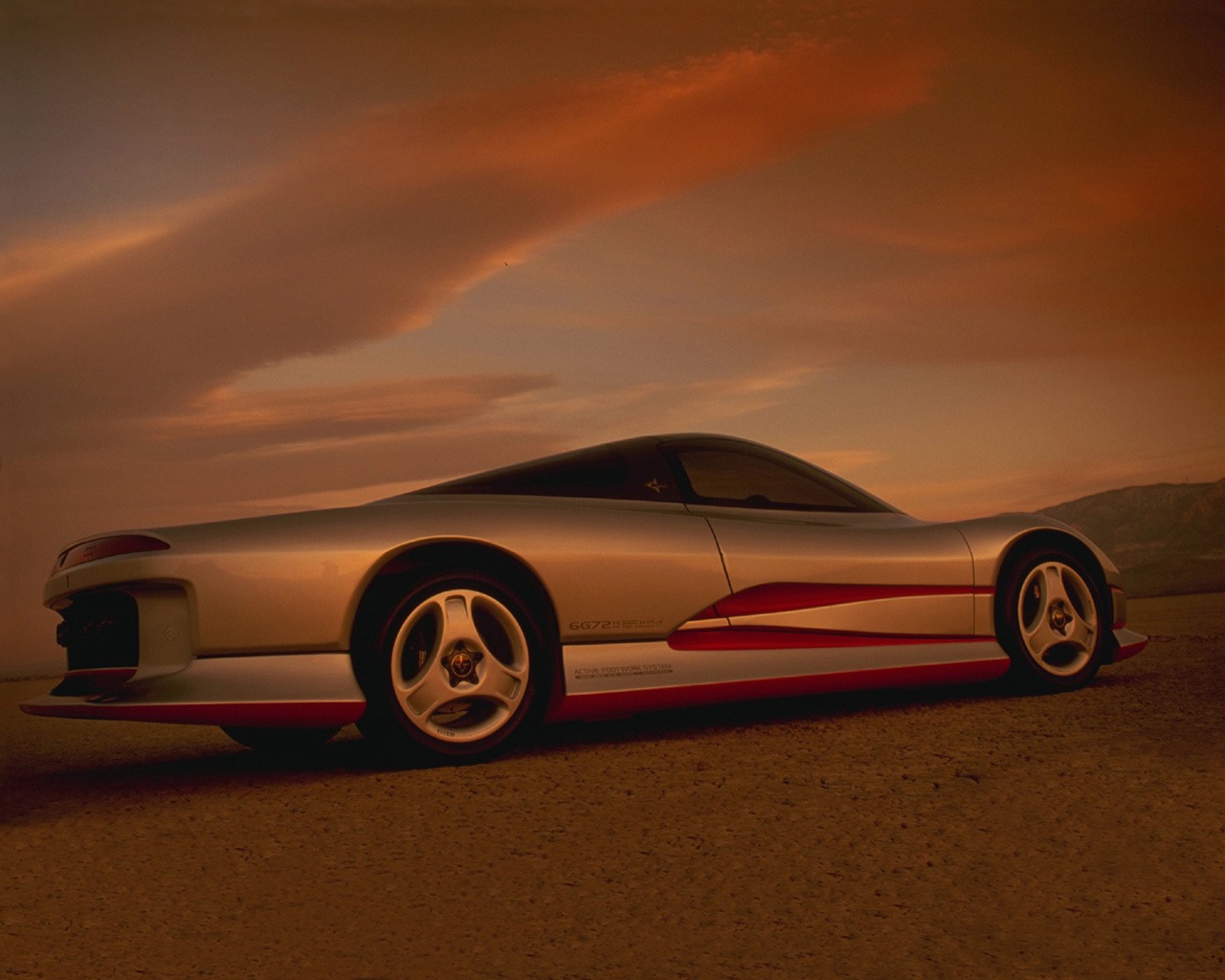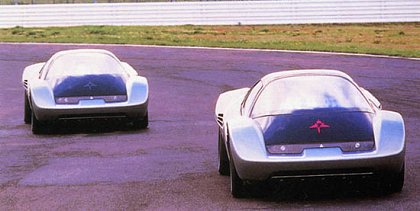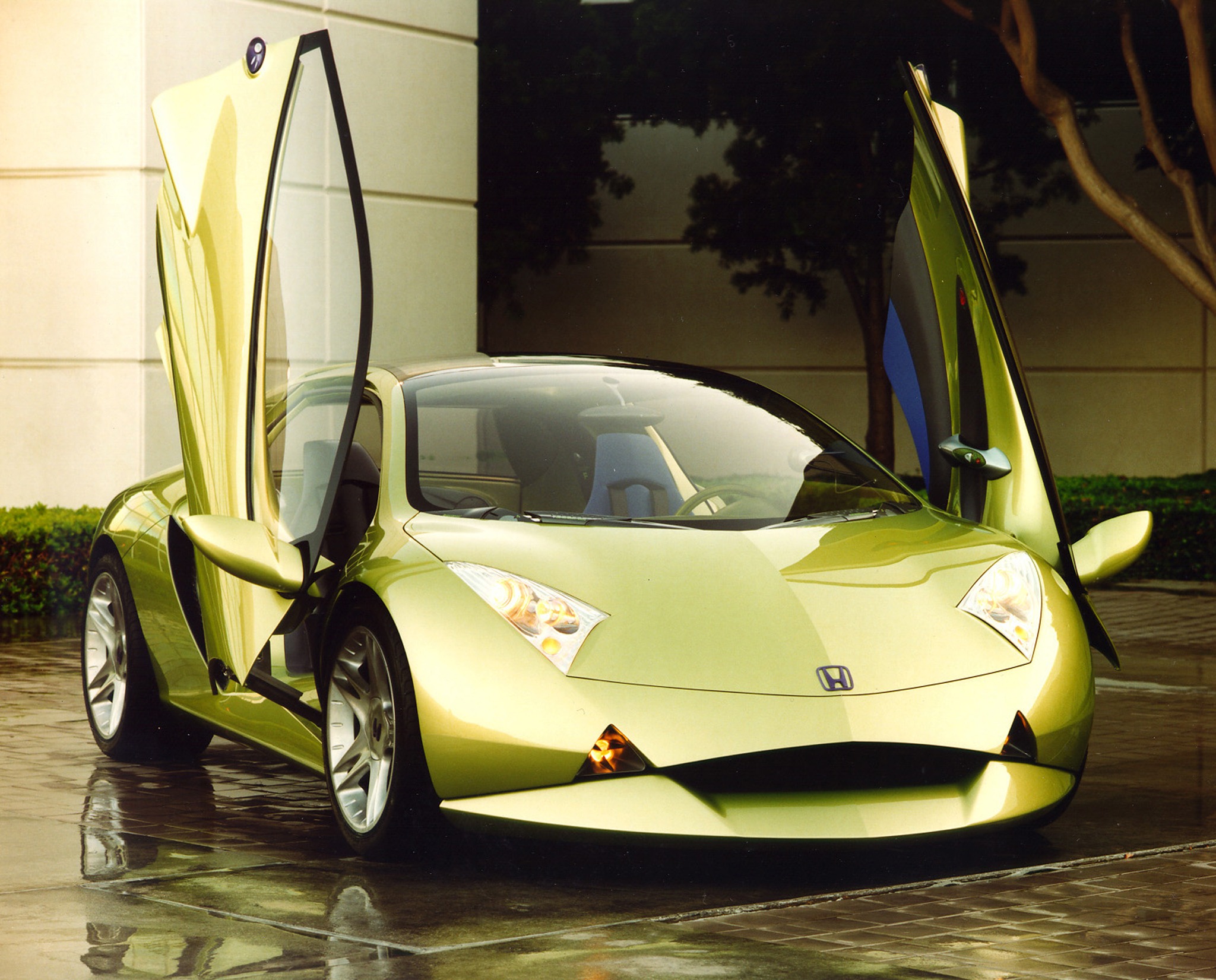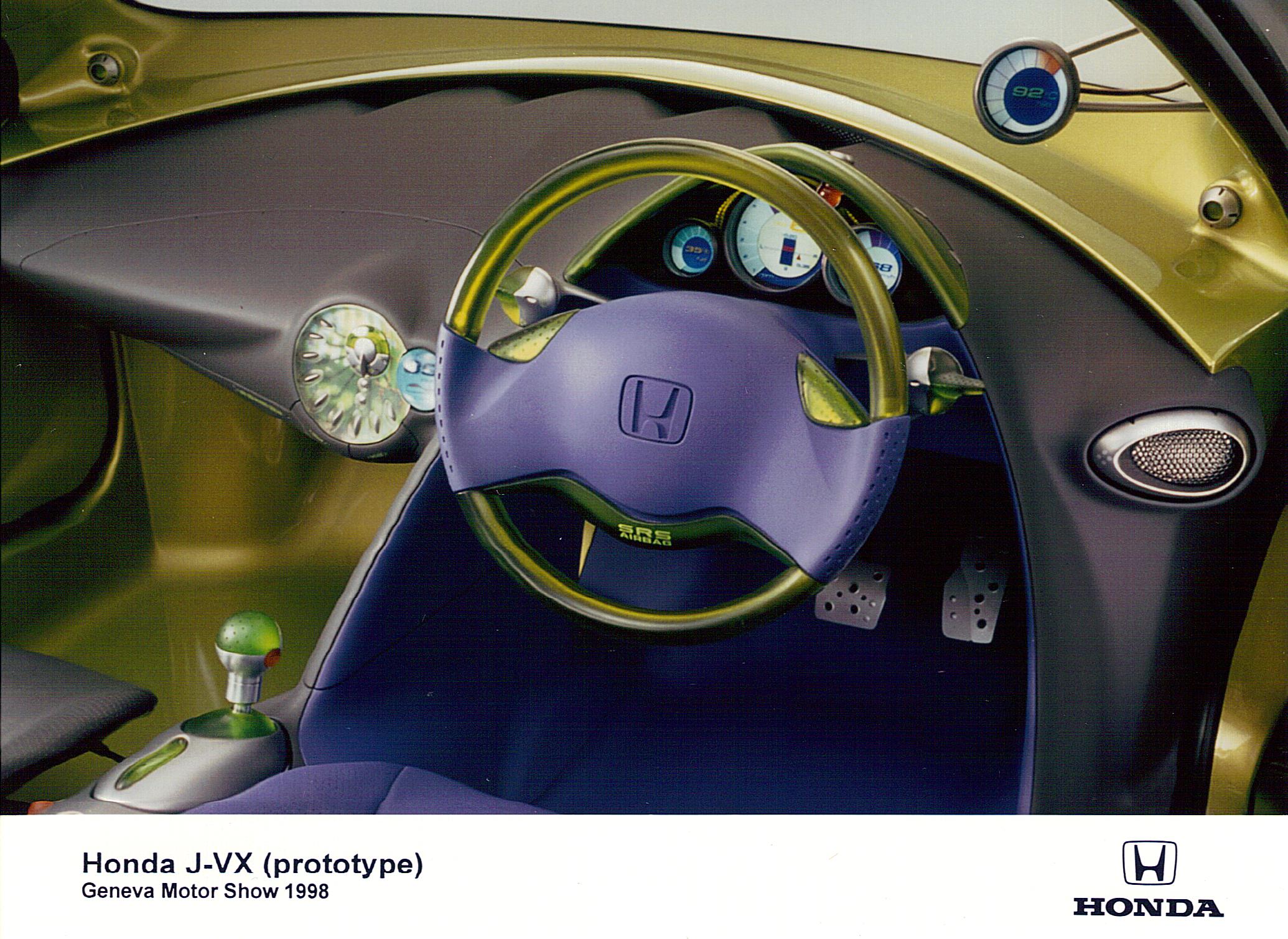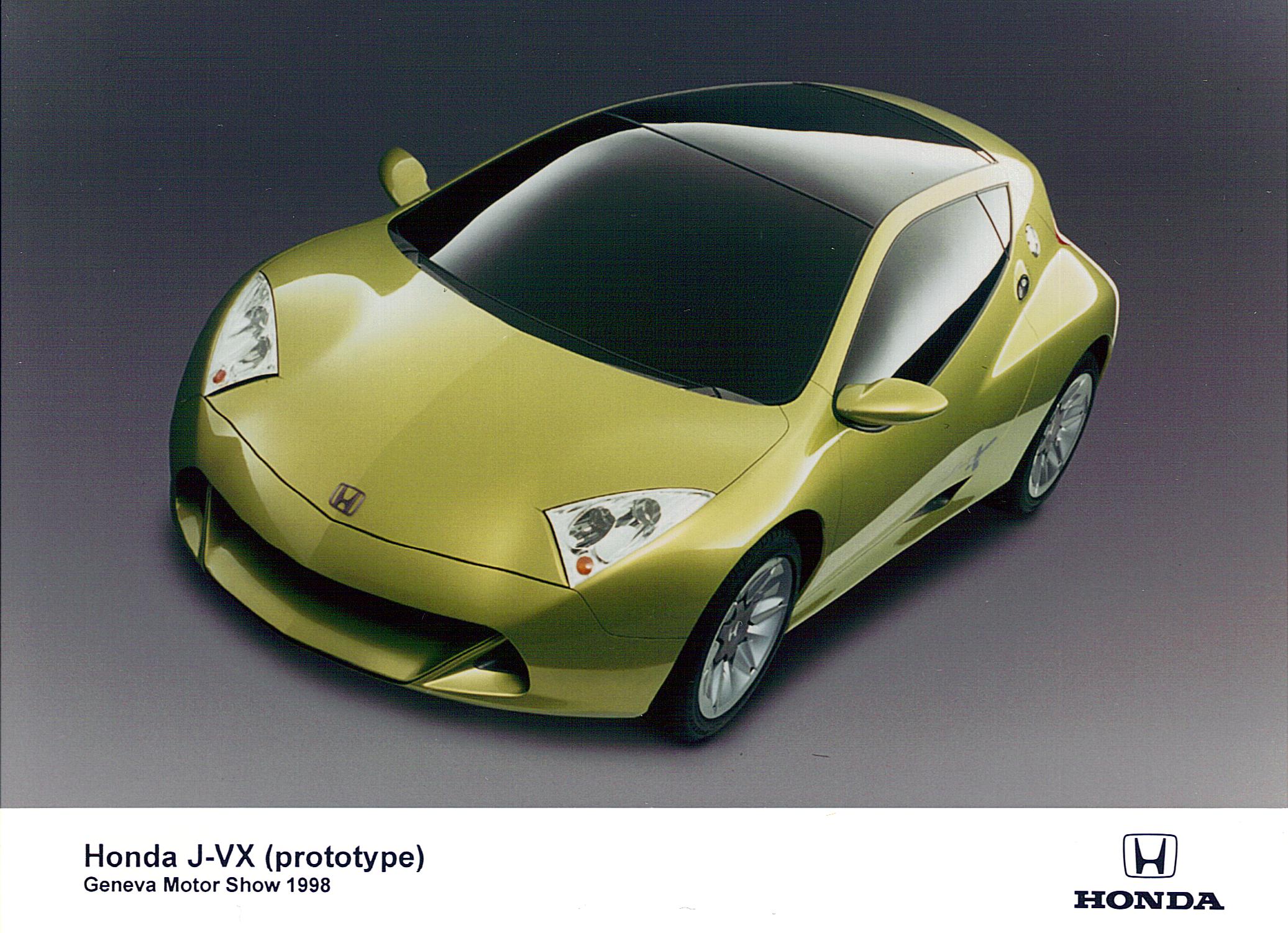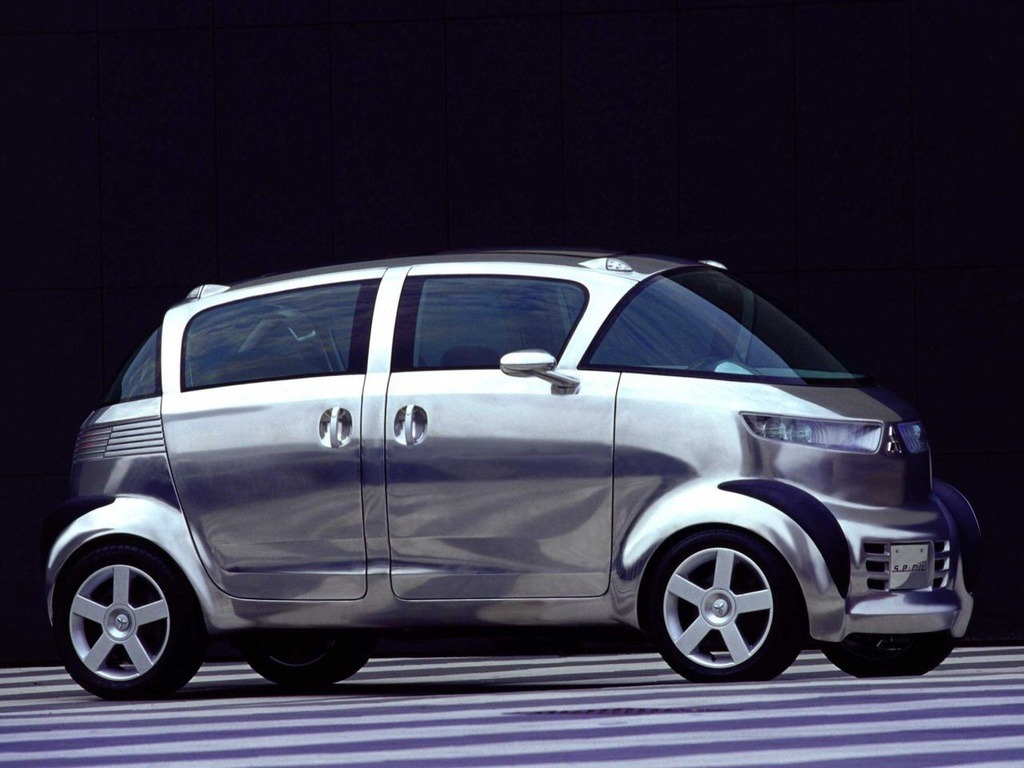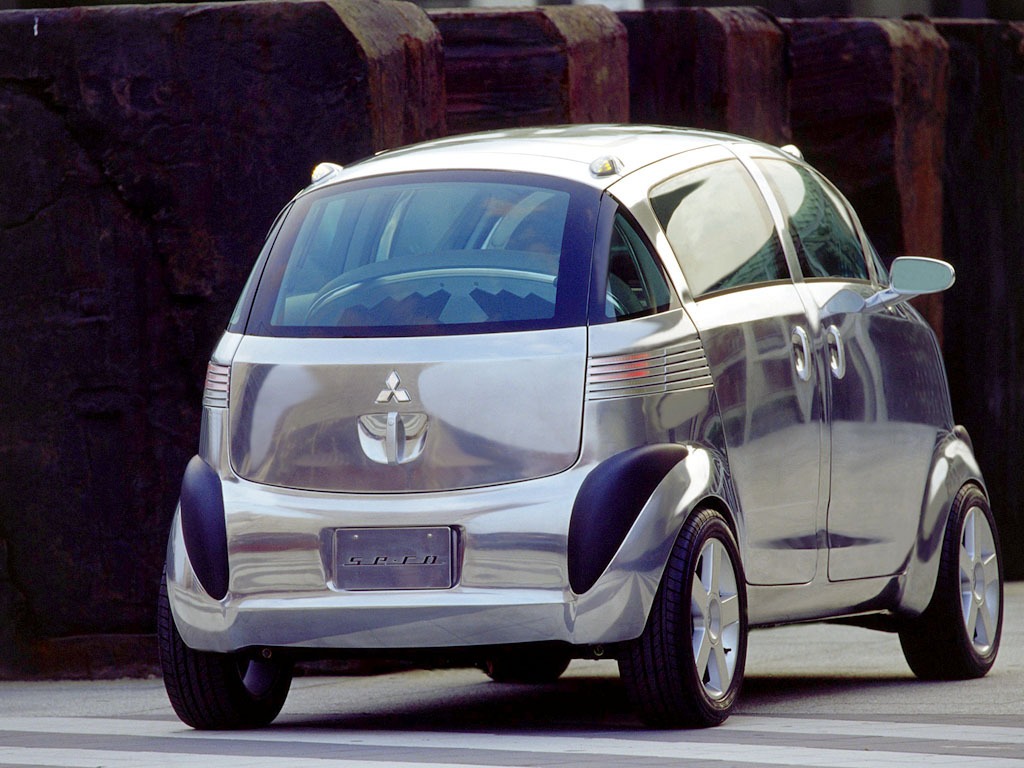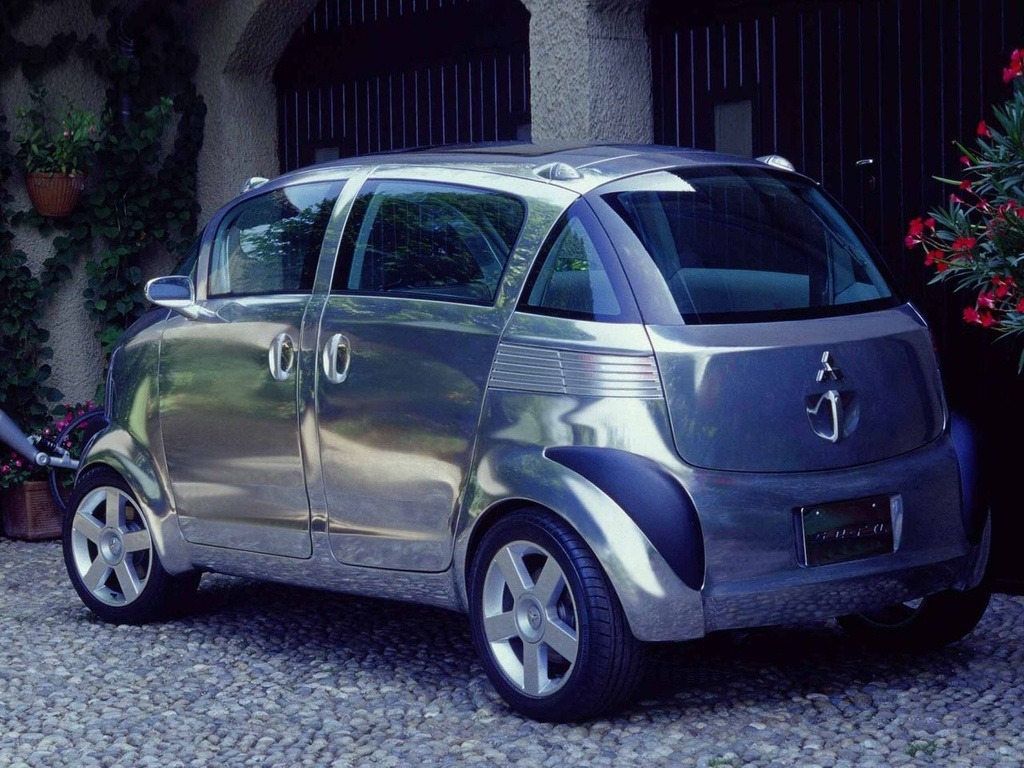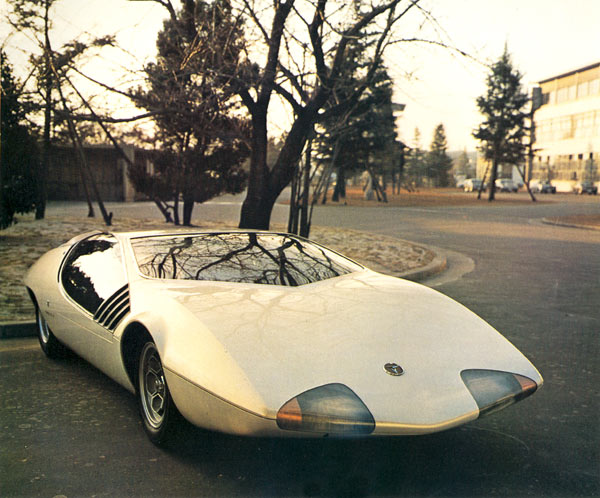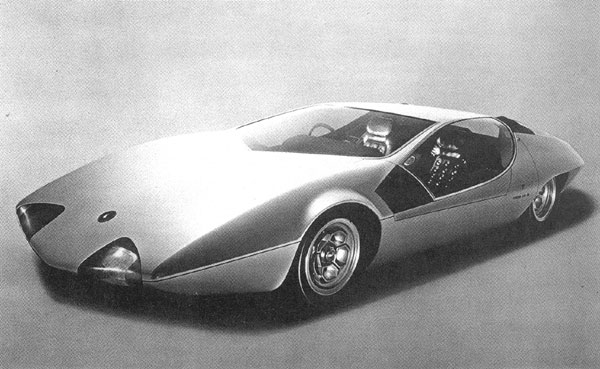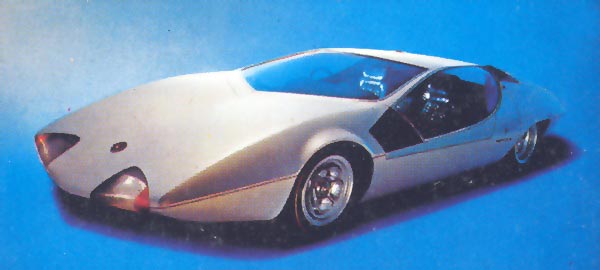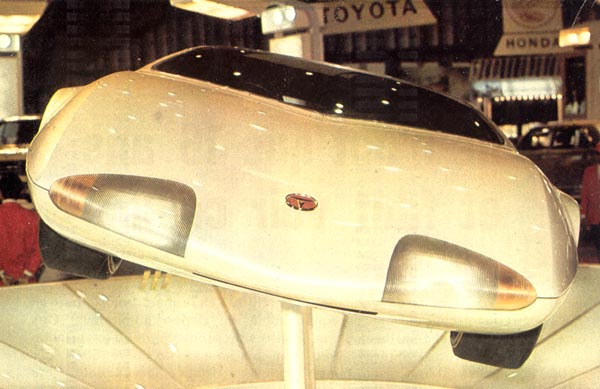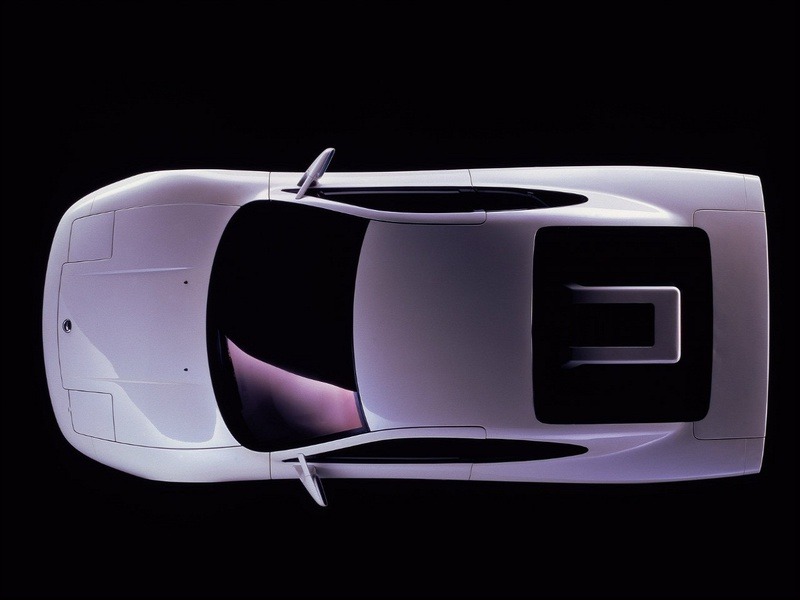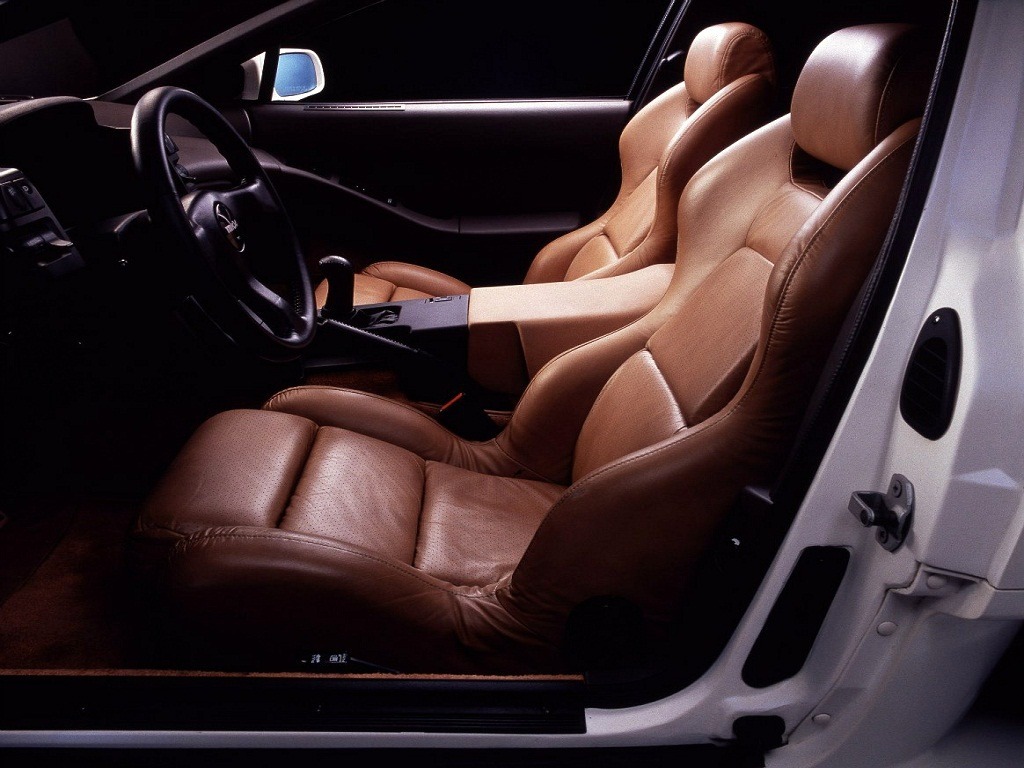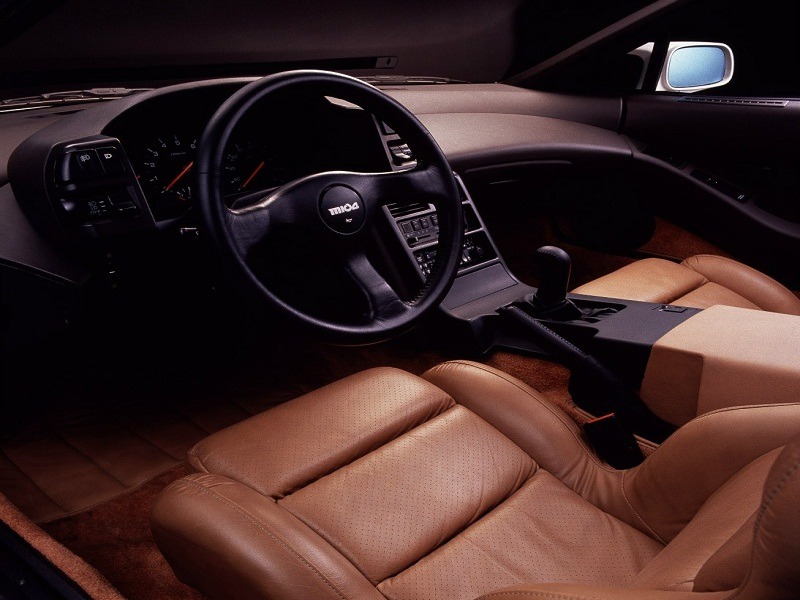Toyota P.O.D Concept (2001)
One of the most unusual vehicles on display during the 2002 show was the POD concept car, jointly developed by Toyota and Sony. POD, stood for personalization on demand. The car could sense the mood of the driver, whether happy or upset. Light emitting diodes accentuate the POD’s front design and changed color according to the driver’s frame of mind. Around the rear of the car, a radio antenna could wag like a pet dog tail. In place of a steering wheel and pedal controls, the car had a single joystick to control vehicle direction, acceleration and braking. Chicago was the first North American showing of the cartoonish POD concept.
Honda HP-X (1984)
Honda commissioned Pininfarina to design the Honda HP-X in 1984. The HP-X stood for Honda Pininfarina Xperimental. The Pininfarina Company has continued to provide styling consultancy services to numerous manufactures over the years. The styling on the Honda HP-X got the ball rolling as far as styling was concerned for the NSX.
The Honda HP-X had a mid-mounted (behind the two-seater cockpit) 2.0 L V6 configuration that was powered by a Honda Formula 2 V8 that had a very low Cd of 0.25.
The HP-X was styled in a way that was intended to show the automotive world was Honda was truly capable of. A single-piece Perspex canopy acted as a windscreen, side windows and roofs and also acted as the only form of entry. The roof lifts off jet-fighter style to allow passengers in.
Toyota Prius Concept (1995)
The Toyota Prius is such a familiar sight on the roads these days that it’s easily forgotten just how revolutionary the notion of a mass-produced hybrid car was only two decades ago. Yet Toyota changed the face of the motoring landscape with the hybrid-powered Prius, which debuted in concept form at the 31st Tokyo Motor Show on October 27, 1995.
Approval for the development of the hybrid vehicle, codenamed ‘890T’, was given at the end of June 1995, leaving only four months to get the concept ready for its public debut. The early THS system in the Prius concept used a capacitor to store its electrical energy rather than the battery pack that eventually became part of the production model’s system and which continues as a main component in Toyota’s current Hybrid Synergy Drive system. Interestingly, Toyota has carried on its development of capacitor-based hybrid systems, most notably in the TS030 and TS040 Hybrid endurance race cars which use supercapacitors to store energy.
Lexus 2054 Minority Report Concept (2002)
In 2002, Lexus was requested by Steven Spielberg, a Lexus owner himself, to design a vehicle that would fit the requirements of year 2054 for his movie adaptation of the Philip K. Dick short story Minority Report. Designers working with Lexus came up with an advanced vehicle that would run on fuel cells and have many advanced safety features, including a crashproof structure and biometric security systems. (Lexus’ cinematic concept car also appears in The Island, though it is colored blue, not red).
Honda EP-X (1991)
With this EPX Concept car, introduced at the 29th Tokyo Motor Show, Honda is exploring new architecture for a next generation car style. The EPX represents an original urban commuter aimed at optimizing economy, impact on environment as well as providing a different driving experience. The two passenger are seated in tandem. There are two doors, one on each side, of a single seat and the canopy can be opened for easy access. The design is heavily oriented toward aerodynamic and follows as much as possible the simple shape of an egg.
Honda Fuya-Jo (1999)
How fun can cars be? The Fuya-jo goes a long way toward supplying the answer. As befitting a vehicle whose name means “Sleepless City”, the Fuya-jo is designed for party animals who demand the full excitement of night life. This “short yet tall” 4-seater induces the same kind of high experienced when riding skateboards or roller blades, or dancing in clubs. If you relish life in the big city, take a ride in this radical, new-generation vehicle and experience the thrill of total satisfaction.
Mazda RX-500 Concept (1970)
The Mazda RX500 was a revolutionary rotary engined concept first shown to the public way back in 1970. Along with it’s unique rotary engine (producing an impressive 300bhp/ton near the bonkers 14000 rpm red line), the RX500 featured many of Mazda’s technological innovations, such as upwards opening ‘butterfly’ doors and multicoloured tail lights that changed colour depending on whether you accelerated or braked.
Toyota FXS Concept (2001)
The FXS is a sign that Toyota is itching to make a serious roadster. With no car to brand Toyota with performance vehicles, the FXS takes over the position of the Supra.
In the design process, Toyota kept the center of gravity as low as possible with a perfect front to rear weight distribution. The new suspension is fairly innovative as the complete double wishbone setup fits within the wheel. Toyota claims this suspension saves both weight and space.
Mitsubishi HSR-II (1989)
The Mitsubishi HSR (Highly Sophisticated-transport Research) is a range of concept cars exhibited by Mitsubishi Motors through the late 1980s and 1990s. There were six distinct iterations of the vehicle released biannually to coincide with the Tokyo Motor Show, with each model after the original identified by a Roman numeral suffixed to the name.
The second generation had a heavy emphasis on active aerodynamics, with a series of movable fins and spoilers offering a drag factor which varied from 0.20 to 0.40 depending on setup. Much of the technology found its way to the Mitsubishi HSX, the precursor to the company’s GTO sports car.
Mitsubishi HSR-V (1995)
The fifth generation, a targa topped sports car with a folding hardtop roof, featured the debut of Mitsubishi’s gasoline direct injection (GDI) technology in its ICDIGE engine.
Honda J-VX (1997)
Even among sports cars, the J-VX was remarkably lightweight. Its compact, aerodynamic form housed a front-engine configuration, 2+2 seating, and nearly ideal front/rear weight ratio delivering true sports car performance. Honda developed a hybrid sports car powertrain that was among the world’s lowest emission rates thanks to its 1.0-liter, 3-cylinder direct injection gasoline engine with Integrated Motor Assist (IMA) system. The IMA system featured a slim electric motor that was connected with the engine and functioned as a supplemental power source during acceleration. The combination hybrid powertrain and continuously variable Honda Multi-Matic transmission resulted in smooth acceleration.
Mitsubishi Se-Ro Concept (2003)
The Mitsubishi Mitsubishi Se-Ro was a concept vehicle which combined the modern small car with 50s style. It has the look of a 50s chrome diner on wheels, just not the size.
The polished aluminium body is attractive and unusual without the mirror effect the Se-Ro might be a very different vehicle.
The Se-Ro is powered by a miniscule 0.6 litre in-line 3 cylinder positioned under the floor along with the transmission.
The symetrical exterior design of the Se-Ro continues in the interior in which the seats can be turned to face rearward.
Overall Mitsubishi’s small car concept is unique. Intended as a lifestyle car the Se-Ro is relaxed and underpowered for the relaxed and underpaid.
Toyota EX-III (1969)
Like the EX-1, the EX-III was also designed for long distance, high speed driving but it was a bigger car.
Shown at the 1969 Tokyo Motor Show, the EX-III was the big brother of the EX-I. The larger body was even more aerodynamic, being built very low with a pointed front (no bumper), a long bonnet, sharply sloped sides and a tapered rear. Large exhaust outlets hinted at a gas turbine engine but no details were given.
Nissan Mid4 Type II Concept (1987)
MID4 is an experimental car to exhibit the achievements of Nissan R&D at motor shows. The model name comes from a supercar with a midshipengine layout and a four-wheel drive system. This car “MID4 II” was exhibited at the 27th Tokyo Motor Show in 1987.
Mounted engine, “VG30DETT”, 3-liter V6 DOHC twin-turbo with intercooler, generated 330ps. The suspension type was Double Wishbone for front and Multilink for rear with steering system named “HICAS”. Although this model was never sold in the market, many of its new technologies were applied to the Nissan 300ZX (Z32) rolled out in 1989 and the Skyline GT-R (R32).

